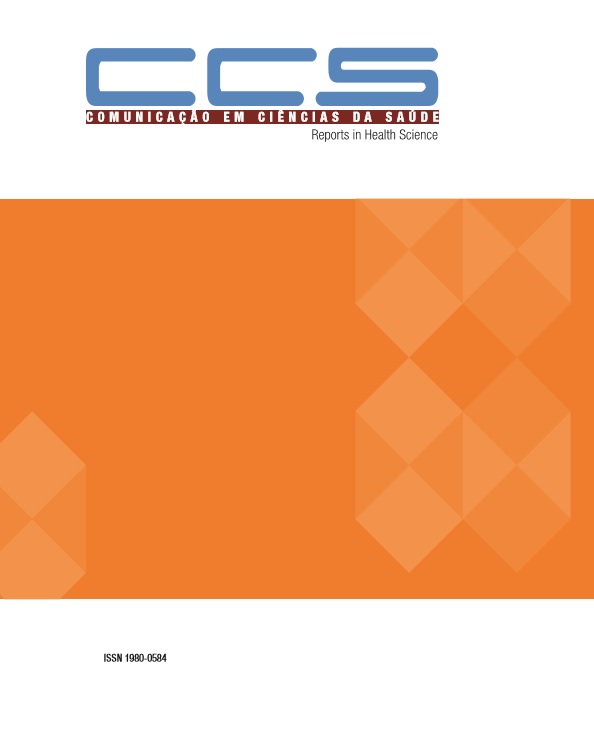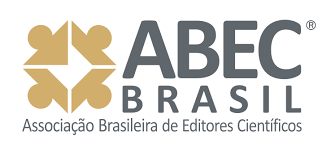Clown as an instrument in the development of empathy and hospital humanization in medical students
DOI:
https://doi.org/10.51723/ccs.v30i03.444Keywords:
Empathy, Medical Education, Humanization of AssistanceAbstract
Objective: to enable medical students to know the importance of medical humanities and hospital humanization, to develop communication and empathy skills through the Clown. Method: report of experience of encounters with the circus-theater group “Sagrado Riso” about clowning techniques. Result: medical students learned about competencies necessary for hospital humanization, such as empathy and cultural competence and interacted with patients through the Clown. Conclusion: students reported a greater understanding of what hospital humanization is, its importance in the health-disease process and the need to develop empathy.
Downloads
References
Gomes PA, Rego S. Transformação da Educação Médica: É Possível Formar um Novo Médico a partir de Mudanças no Método de Ensino-Aprendizagem? Rev. bras. educ. med. 2011; 35(4): 557-566. doi.org/10.1590/S0100-55022011000400016.
Almeida SMV, Babora LMV. Curricularização da Extensão Universitária no Ensino Médico: o Encontro das Gerações para Humanização da Formação. Rev. bras. educ. med. 2019; 43(1): S672-S680. doi.org/10.1590/1981-5271v43suplemento1-20190013.
Barboza JS, Felicio HMS. Humanidades Médicas e seu Lugar no Currículo: Opiniões dos Participantes do Cobem/2017. Rev. bras. educ. med. 2020; 44(1): e028. doi.org/10.1590/1981-5271v44.1-20190155.
Cowley C. Polemic: five proposals for a medical school admission policy. J Med Ethics. 2006; 32(8):491-494. doi: 10.1136/jme.2005.013524. PubMed; PMID 16877632.
Hemmerdinger JM, Stoddart SDR, Lilford RJ. A systematic review of tests of empathy in medicine. BMC Med Educ. 2007;7:1–8. doi: 10.1186/1472-6920-7-24. PubMed; PMID 17651477.
Mukunda N, Moghbeli N, Rizzo A, Niepold S, Bassett B, DeLisser HM. Visual art instruction in medical education: a narrative review. Medical Education Online. 2019; 24(1): 1558657. doi: 10.1080/10872981.2018.1558657.
Hajar R. Can incorporating art into medical education help medical students become better doctors? Heart Views. 2016; 17(2): 77. doi: 10.4103/1995-705x.185120.
Bruhn MM, Boscolo KO, Barboza RP, Cruz LR. Psicologia, palhaçaria e psicodrama: construção coletiva de aprendizados e intervenções. Rev Bras Psicodrama. 2019; 27(1): 65-74. doi.org/10.15329/0104-5393.20190007.
Ministério da Educação. Resolução Nº 3, de 20 de Junho de 2014. Institui Diretrizes Curriculares Nacionais do Curso de Graduação em Medicina e dá outras providências. Brasília: Ministério da Educação; 2014. Disponível em http://portal.mec.gov.br/escola-de-gestores-da-educacao-basica/323-secretarias-112877938/orgaos-vinculados-82187207/20138-ces-2014.
Achcar A. Palhaço de Hospital: Proposta Metodológica de Formação. Rio de Janeiro: Centro de Letras e Artes, Universidade Federal do Estado do Rio De Janeiro; 2007. Disponível em http://livros01.livrosgratis.com.br/cp061294.pdf.
Peterson D. Medical Clowning: The Healing Performance by Amnon Raviv. Theatre Journal. 2019; 71(3): 408-409. doi: 101353/tj.2019.0075.
Lemp H, Seale C. The Hidden Curriculum in Undergraduate Medical Education: Qualitative Study of Medical Students’ Perceptions of Teaching. 2004; 329(7469): 770–773. doi: 101136/bmj.329.7469.770. PubMed; PMID 15459051.
Vincenza F, Consorti F. "Which place for art in Medical Education? A narrative review." Senses and Sciences. 2019; 6(2): 740-746.
Murinson BB, Ph D, Nenortas E, Mayer RS, Kozachok S, Nesbit S, et al. A New Program in Pain Medicine for Medical Students: Integrating Core Curriculum Knowledge with Emotional and Reflective Development. Pain Medicine 2011;12(2):186–95. doi: 10.1111/j.1526-4637.2010.01050.x. PubMed; PMID 21276187.
Hojat M, Mangione S, Nasca TJ, Gonnella JS, Magee M. Empathy scores in medical school and ratings of empathic behavior in residency training 3 years later. J Soc Psychol. 2005; 145(6):663-672. doi: 10.3200/SOCP.145.6.663-672. PubMed; PMID 16334513.
Potash JS, Chen JY, Lam CL, Chau VT. Art-making in a family medicine clerkship: How does it affect medical student empathy? BMC Med Educ. 2014;14(1):1-9. doi: 10.1186/s12909-014-0247-4. PubMed; PMID 25431323.
Dow AW, Leong D, Anderson A, Wenzel RP: Using theater to teach clinical empathy: a pilot study. J Gen Intern Med. 2007; 22(8):1114-1118. doi: 10.1007/s11606-007-0224-2. PubMed; PMID 17486385.
Mercer A, Warson E, Zhao J: Visual journaling: an intervention to influence stress, anxiety and affect levels in medical students. Arts Psychother. 2010; 37(2):143-148. doi: 10.1016/j.aip.2009.12.003.
Orr AR, Moghbeli N, Swain A, Bassett B, Niepold S, Rizzo A, et al. The Fostering Resilience through Art in Medical Education (FRAME) workshop: a partnership with the Philadelphia Museum of Art. Advances in Medical Education and Practice. 2019; 10: 361-369. doi: 10.2147/AMEP.S194575.
Fareed M, Noor WSWM, Isa MFM, Shahzad A, Laeeq H. The role of human capital development and high performance work system in sustaining the human resource professionals’ effectiveness: A lesson from pakistan’s telco companies. Int J Econ Perspect. 2016;10(4): 512–25. Disponível em https://www.academia.edu/34856625/The_Role_of_HCD_and_HPWS_in_Sustaining_HR_Professionals_Effectiveness_A_Lesson_from_Pakistans_Telco_Companies.
Downloads
Published
How to Cite
Issue
Section
License
Declaro para os devidos fins que o artigo que estou submetendo representa um trabalho original e nunca foi publicado total ou parcialmente, e que se alguma de suas partes foi publicada possuímos autorização expressa para a publicação no periódico Comunicação em Ciências da Saúde (CCS). Esse artigo não foi enviado a outro periódico e não o será enquanto estiver sendo considerada sua publicação; caso venha a ser aceito não será publicado em outro periódico; e não contém material difamatório ou ilegal sob nenhuma forma, não viola a intimidade de terceiros, nem infringe direitos protegidos.
Eu e demais autores desse trabalho certificamos por meio desta declaração que:
- Concordamos com as normas editoriais e com o processo de revisão da CCS;
- Aceitamos a responsabilidade pela conduta desse estudo e pela análise e interpretação dos dados;
- Cooperaremos, sempre que solicitado, na obtenção e fornecimento de dados sobre os quais o manuscrito está baseado, para exame dos avaliadores;
- Não estão sendo omitidos quaisquer ligações ou acordos de financiamento entre os autores e companhias ou pessoas que possam ter interesse no material abordado no artigo;
- Não estão sendo excluídos ou omitidos deste artigo autores ou instituições participantes;
- Possuímos permissão para uso de figuras e tabelas publicadas em outras fontes;
- Possuímos permissão das pessoas e instituições citadas nos agradecimentos;
- O autor correspondente autoriza a publicação do endereço informado e e-mail do(s) autor(es) junto com o artigo;
- Assumimos a responsabilidade pela entrega de documentos verídicos;
- Autorizamos a publicação do referido artigo no periódico Comunicação em Ciências da Saúde, segundo critérios próprios e em número e volume a serem definidos pelo editor do periódico;
- Nos comprometemos a atender os prazos estipulados pelos editores do periódico Comunicação em Ciências da saúde;
- Estamos cientes de que a não manifestação no prazo de dois dias da revisão da diagramação, recebida por e-mail, será considerado aprovado para publicação.








